|
||||||||||||||||||||||||||||
This is in Bhuj
|
||||||||||||||||||||||||||||
Swaminarayan Temple
|
Please visit for more details: http://www.bhujmandir.org
![]() LABELS: Hinduism, Temple
LABELS: Hinduism, Temple![]()
This is in Bhuj
![]()
By road: For those traveling from Ahmedabad, the bus may be more convenient than the train, though slightly more expensive. Several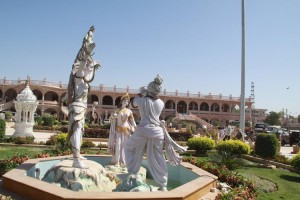 private companies run sleeper buses (with a full horizontal bunk), leaving the city for Bhuj between 8pm and 11pm, arriving in Bhuj between 6am and 8am the next morning. These bus companies all have their offices around Paldi in Ahmedabad; Sahjanand Travels and Patel Travels are two recommended ones. There are also private sitting (non-sleeper) buses, and ST (State Transport) buses that make the trip for less money but considerably less comfortable seats.
private companies run sleeper buses (with a full horizontal bunk), leaving the city for Bhuj between 8pm and 11pm, arriving in Bhuj between 6am and 8am the next morning. These bus companies all have their offices around Paldi in Ahmedabad; Sahjanand Travels and Patel Travels are two recommended ones. There are also private sitting (non-sleeper) buses, and ST (State Transport) buses that make the trip for less money but considerably less comfortable seats.
By rail: Two daily express trains, the Bhuj Express and the Kutch Express, go from Bhuj to Ahmedabad (8hrs) and on to Mumbai (16hrs.) However, both trains pass through Ahmedabad in the middle of the night, as the schedules are designed to depart and arrive and reasonable hours from Bhuj and Mumbai, not Ahmedabad.
By air: One or more flights daily connect Bhuj to Mumbai.
Once in Bhuj, ST buses go to larger destinations around the district, private jeeps can also be rented (a good option for larger parties), and some smaller places can only be reached bychhakdas.
Kera
Just 22 kms south of Bhuj on the road to Mandra, Kera houses the ruins of a Shiva Temple that dates to the era of the Solanki rulers. Only part of the temple remains, as much was destroyed in the 1819 earthquake, but the inner sanctum is still there, as well as half of the main spire. The Fort of Kapilkot, also in a rather rundown state, is next to the temple.
LABELS: Fort, Hinduism, Temple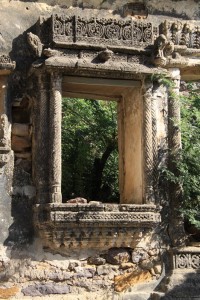
This is near/around Bhuj
![]()
![]()
By road: For those traveling from Ahmedabad, the bus may be more convenient than the train, though slightly more expensive. Several private companies run sleeper buses (with a full horizontal bunk), leaving the city for Bhuj between 8pm and 11pm, arriving in Bhuj between 6am and 8am the next morning. These bus companies all have their offices around Paldi in Ahmedabad; Sahjanand Travels and Patel Travels are two recommended ones. There are also private sitting (non-sleeper) buses, and ST (State Transport) buses that make the trip for less money but considerably less comfortable seats.
By rail: Two daily express trains, the Bhuj Express and the Kutch Express, go from Bhuj to Ahmedabad (8hrs) and on to Mumbai (16hrs.) However, both trains pass through Ahmedabad in the middle of the night, as the schedules are designed to depart and arrive and reasonable hours from Bhuj and Mumbai, not Ahmedabad.
By air: One or more flights daily connect Bhuj to Mumbai.
Once in Bhuj, ST buses go to larger destinations around the district, private jeeps can also be rented (a good option for larger parties), and some smaller places can only be reached bychhakdas.
|
Inside the palace, you can visit the main palace halls as well as climb stairs of the 45m bell tower for an exhilarating view of the city. After coming down (not before, for your own peace of mind!), check out the cracks between the stones in the wall, visible from the courtyard, caused by various earthquakes over the years. Then stop for a glass of fresh sugarcane juice on your way out of the compound.
| Location: | |
| Situated next to the Aina Mahal in the same compound | |
| Timings: | |
| Open round the year except Saturday | 9:00am – 12:00pm & 3:00pm – 6:00pm |
| Fees: | |
| Entry | Rs.10/- |
| Charges for Photography | Rs.30/- |
| Charges for Video Shooting | Rs.100/- |
![]() LABELS: Palace
LABELS: Palace![]()
This is in Bhuj
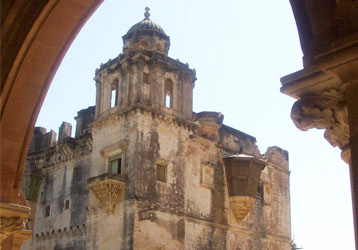 JJJJ private companies run sleeper buses (with a full horizontal bunk), leaving the city for Bhuj between 8pm and 11pm, arriving in Bhuj between 6am and 8am the next morning. These bus companies all have their offices around Paldi in Ahmedabad; Sahjanand Travels and Patel Travels are two recommended ones. There are also private sitting (non-sleeper) buses, and ST (State Transport) buses that make the trip for less money but considerably less comfortable seats.
JJJJ private companies run sleeper buses (with a full horizontal bunk), leaving the city for Bhuj between 8pm and 11pm, arriving in Bhuj between 6am and 8am the next morning. These bus companies all have their offices around Paldi in Ahmedabad; Sahjanand Travels and Patel Travels are two recommended ones. There are also private sitting (non-sleeper) buses, and ST (State Transport) buses that make the trip for less money but considerably less comfortable seats.By rail: Two daily express trains, the Bhuj Express and the Kutch Express, go from Bhuj to Ahmedabad (8hrs) and on to Mumbai (16hrs.) However, both trains pass through Ahmedabad in the middle of the night, as the schedules are designed to depart and arrive and reasonable hours from Bhuj and Mumbai, not Ahmedabad.By air: One or more flights daily connect Bhuj to Mumbai.
Once in Bhuj, ST buses go to larger destinations around the district, private jeeps can also be rented (a good option for larger parties), and some smaller places can only be reached bychhakdas.
Ramkund Stepwell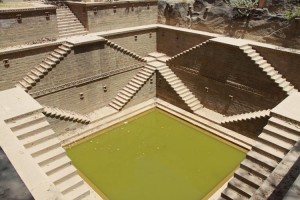
Across from the Kutch Museum and behind the Ram Dhun Temple, the Ramkund well is a square stepwell, 56 feet on a side, with sculptures portraying characters from the Ramayana, such as Lord Ram, Devi Sita, Lakshman and Lord Hanuman, as well as the ten incarnations of Lord Vishnu along the walls. On your walk down to the water you experience a sudden calm and coolness not to be found on the road above and in the quiet, you can pause for a while to reflect on your experiences. The Ram Dhun Temple, just in front of the well, is also worth a quick visit.
Sharad Baug Palace
The king’s residence right up to 1991 when the last king of Kutch, Madansingh died, the palace is now a museum. With beautiful gardens of many flowering and medicinal plants, the palace grounds houses many migrating birds as they stop for a rest on their way.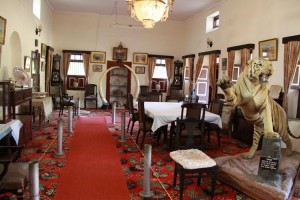 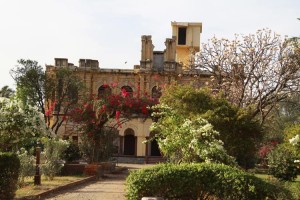 |
Note: Photography allowed only with permission and a fee.
![]() LABELS: Gardens/Parks, Museum, Palace
LABELS: Gardens/Parks, Museum, Palace
Khavda
For those heading northwards, Khavda, 66 kms along the principal road going north of Bhuj, is a major stop and the last place to get bottled water and fruits before heading to other destinations. The center of town also has Kutchi food available.
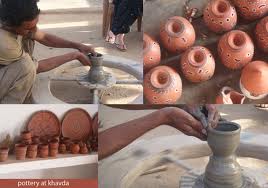 The town has excellent potters and leather craftsmen (indicating a heavy Muslim presence, as Hindus do not use leather), and ajrakh blockprinting at khatrivas. The KMVS office in Khavda sells embroidered handmade dolls and other textile products and is run by local women. The Khavda area has a well-blended population of Meghwals (Hindus) and Muslims hailing from Sindh, leading to interesting combinations of work styles and social traditions. You will find Hindus, more likely to be woodcarvers, for example, and Muslims more likely to do leatherwork, working side by side in the same village.
The town has excellent potters and leather craftsmen (indicating a heavy Muslim presence, as Hindus do not use leather), and ajrakh blockprinting at khatrivas. The KMVS office in Khavda sells embroidered handmade dolls and other textile products and is run by local women. The Khavda area has a well-blended population of Meghwals (Hindus) and Muslims hailing from Sindh, leading to interesting combinations of work styles and social traditions. You will find Hindus, more likely to be woodcarvers, for example, and Muslims more likely to do leatherwork, working side by side in the same village.
Khavda is also the departure point to visit the world’s largest flamingo colony, at a lake in the desert out past Jamkundaliya, where a half million flamingos stop over on their migrations every year. The flamingo colony can only be reached by camel and is best visited in the winter (Oct. to Mar).
The Black Hills (Kalo Dungar)
25 kms north of Khavda, the top of the Black Hills is the highest point in Kutch, at 462 m. From here, the entire northern horizon vanishes into the Great Rann, the desert and sky often becoming indistinguishable. It is one of the few non-coastal locations where you feel like you are at the edge of the earth, on the brink of incomprehensible vastness that fades off towards infinity. Looking out from the Black Hills, you can understand the tremendous effort that those who undertake the crossing of the Great Rann have to make. Since this is one of the places where a civilian can get closest to the Pakistan border, there is an Army post at the top; beyond here, only military personnel are allowed. The hill is also the site of a 400-year-old temple to Dattatreya, the three-headed incarnation of Lord Brahma, Lord Vishnu and Lord Shiva in the same body. Legend says that when Dattatreya walked on the earth, he stopped at the Black Hills and found a band of starving jackals. Being a god, he offered them his body to eat and as they ate, his body continually regenerated itself. Because of this, for the last four centuries, the priest at the temple has prepared a batch of prasad that is fed to the jackals after the evening aarti.
places where a civilian can get closest to the Pakistan border, there is an Army post at the top; beyond here, only military personnel are allowed. The hill is also the site of a 400-year-old temple to Dattatreya, the three-headed incarnation of Lord Brahma, Lord Vishnu and Lord Shiva in the same body. Legend says that when Dattatreya walked on the earth, he stopped at the Black Hills and found a band of starving jackals. Being a god, he offered them his body to eat and as they ate, his body continually regenerated itself. Because of this, for the last four centuries, the priest at the temple has prepared a batch of prasad that is fed to the jackals after the evening aarti.
Reaching the hilltop by public transport is difficult; the only bus travels there from Khavda on weekend evenings and returns in the early morning. Hiring a jeep from Khavda is your other option. Visiting in the early morning or late afternoon is recommended, though with a few more hours there are nice hikes to do around the hill. Be sure to take your own food and water and if you want to stay the night, there is a dharamshala next to the temple.
LABELS: Hills, Hinduism, Temple
Chhari Dhand
This Chhari Dhandh is situated near Fulay Village in Nakhtranan Taluka, which is around 80 kms North-West of Bhuj and 30 kms from Nakhatran.
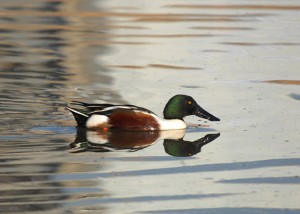
Chhari means salt affected and Dhandh means Shallow wet-lands. This places is a paradise for bird watchers and omithologists, having around 370 bird species and is particularly rich in raports, water fly, waders and larks.
This is a thriving region to come up as an eco-tourism centre in Kutch.
For more details, please view the followings site: http://kutchibirds.webs.com
Kutch Museum.
The oldest museum in Gujarat, founded in 1877 by Maharao Khengarji, it has the largest existing collection of Kshatrapa inscriptions, dating to the 1st century AD, as well as examples of the extinct Kutchi script (now the language is mostly written in the Gujarati alphabets) and an interesting collection of coins (including the kori, Kutch’s local currency.) A section of the museum is devoted to tribal cultures, with many examples of ancient artifacts, folk arts and crafts and information about tribal peoples. The museum also has exhibits of embroidery, paintings, arms, musical instruments, sculpture and precious metalwork.
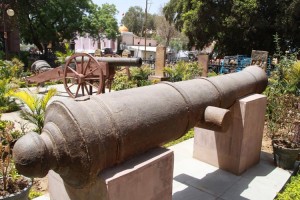 A visit to the Kutch Museum, to learn about the history of tribal and folk tradition of the district, will help you get to know about present-day people and their lives. Remember that visiting a museum is a great way to learn about history, but tribals are not merely part of history, they are a major part of Kutch’s (and India’s) population and cultural identity today. Try to visit people’s homes and families; a visit to a museum and a conversation with a real human being are not mutually exclusive, they are complementary, and if anything, the latter is the most important of all.
A visit to the Kutch Museum, to learn about the history of tribal and folk tradition of the district, will help you get to know about present-day people and their lives. Remember that visiting a museum is a great way to learn about history, but tribals are not merely part of history, they are a major part of Kutch’s (and India’s) population and cultural identity today. Try to visit people’s homes and families; a visit to a museum and a conversation with a real human being are not mutually exclusive, they are complementary, and if anything, the latter is the most important of all.
The Museum has been under renovation lately, check the hours before visiting.
Bharatiya Sanskriti Darshan
A Kutchi cultural center, located further south along College Road (which leads away from the lake past Alfred High School, the Ramkund stepwell and the Swaminarayan temple), the B.S.D. contains an excellent collection of Kutchi folk art and crafts, especially from the more remote regions of the district, collected by a forest service official as he traveled around doing government work. There are also exhibits of rural architecture, paintings, textile arts and archaeological specimens.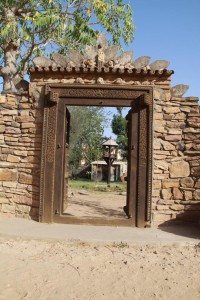 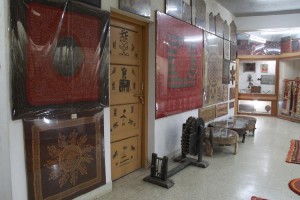 |
| Location: | |
| Located south along the College Rode | |
| Timings: | |
| Open round the year except Monday | 10:00am – 1:15pm & 2:00pm – 6:00pm |
| Fees: | |
| For Indians | Rs.10/- |
| For Foreigners | Rs.50/- |
Note: Photography is not permitted.
![]() LABELS: Archaeology, Handicraft, Museum
LABELS: Archaeology, Handicraft, Museum
Royal Chhatardis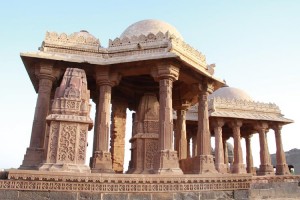
About a 20-minute walk southwest of Hamirsar lake, through open areas that no longer seem like you’re in the city, are the royal cenotaphs (memorials to those not actually buried there and, in this case, not buried at all but cremated). Many of the monuments are in ruins due to earthquakes, but those of Lakhpatji, Raydhanji II and Desarji are still quite intact. The site is very quiet, out in the middle of a field, not surrounded by buildings, and is very peaceful in morning or evening, though in the middle of the day it can be quite hot under bright sun.
Hamirsar Lake
An excellent place to cool off on a hot afternoon, Hamirsar Lake is where people go to swim, or sit under a tree and enjoy the water, as 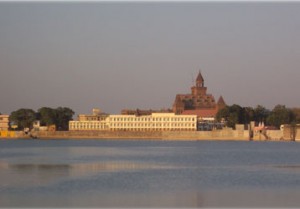 well as where many women do their laundry. Walking along the lake’s edge is a great way to get from one place to another, with the Aina Mahal and Praga Mahal, the Kutch Museum, the Ramkund Stepwell and Ram Dhun Temple, the Swaminarayan Temple and the Alfred High School alllocated very close to the eastern side of the lake; a walk from the Aina Mahal to the Swaminarayan Temple (passing all the other sites mentioned) takes about half an hour. Further around the other side of the lake is the Sharad Baug palace, and the road to the royal chhatardis. well as where many women do their laundry. Walking along the lake’s edge is a great way to get from one place to another, with the Aina Mahal and Praga Mahal, the Kutch Museum, the Ramkund Stepwell and Ram Dhun Temple, the Swaminarayan Temple and the Alfred High School alllocated very close to the eastern side of the lake; a walk from the Aina Mahal to the Swaminarayan Temple (passing all the other sites mentioned) takes about half an hour. Further around the other side of the lake is the Sharad Baug palace, and the road to the royal chhatardis. |
| LABELS: Lake |
Vegetable Market
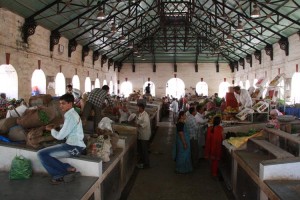
Just a couple of blocks outside the gates of the Aina Mahal and Prag Mahal, take a stroll through the fruit and vegetable market, housed in an old British garrison. Pick up some fresh fruits for a snack, and have a cup of tea or some cold juice to beat the heat.

| LABELS: Architecture, Market |
Kutchi handicrafts, renowned the world over, are in abundance in Bhuj, from elaborately embroidered clothing and luxurious quilts to block-printing, heavy silver jewelry and woodcarving. Or better yet, you can use Bhuj as a base for excursions to surrounding towns and villages to meet artisans and their families, see the work being done and buy crafts directly from the artisans themselves. This allows more of the income to go directly to the craftsmen and more importantly, creates a relationship between the maker of an item and its eventual owner, in which each one meets the other, learns something about the other’s life and shares a bit of their own identity and background. You will quite likely find the personal interaction more valuable than the commercial one and the memory of the visit will stay with you even if you give away what you bought as gifts.Handicrafts
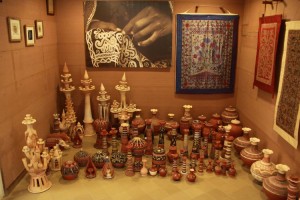


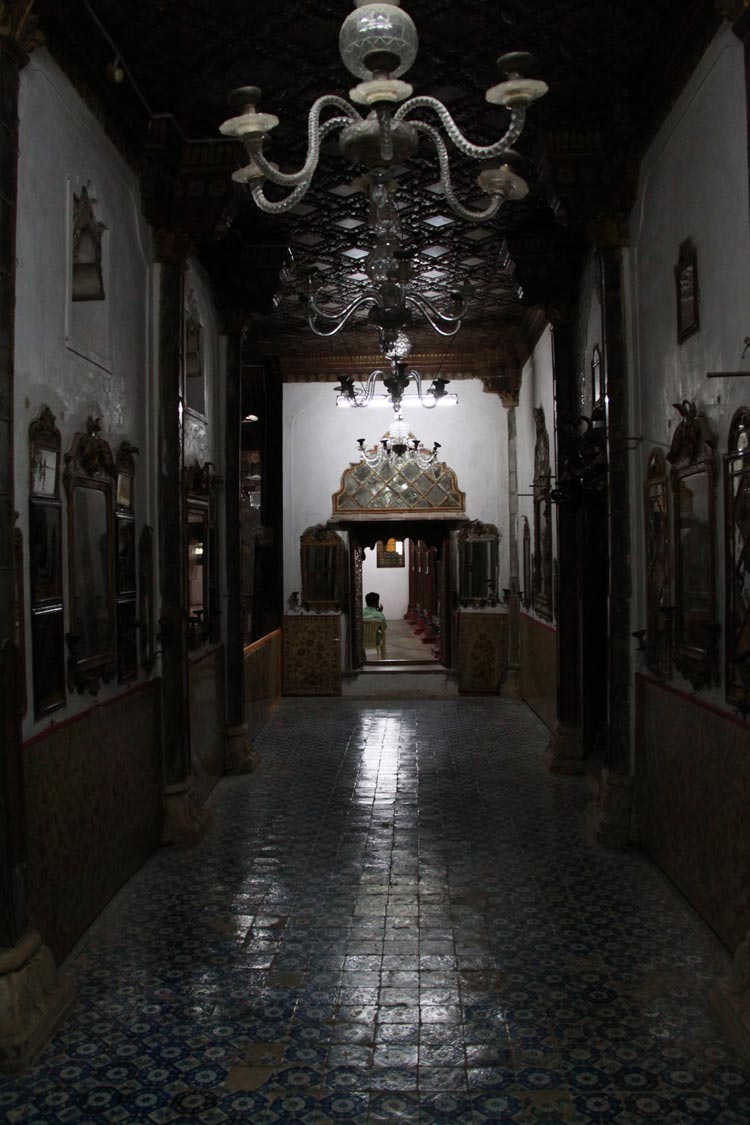

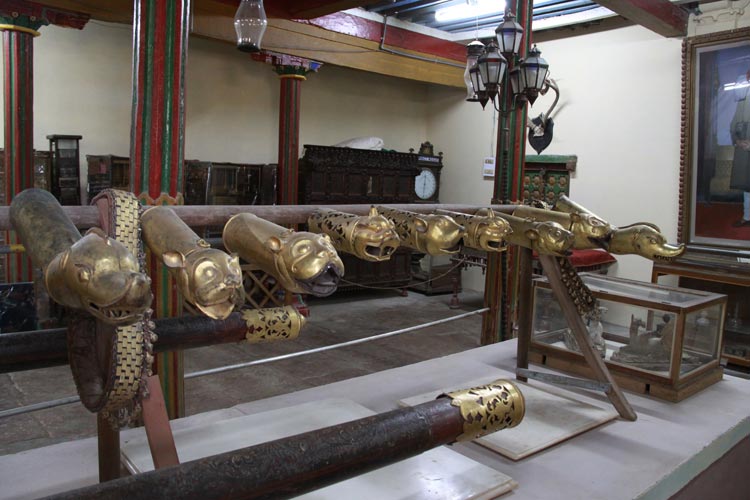
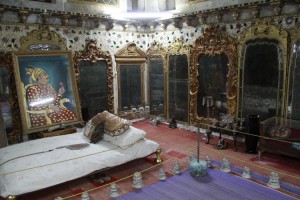 convenient than the train, though slightly more expensive. Several private companies run sleeper buses (with a full horizontal bunk), leaving the city for Bhuj between 8pm and 11pm, arriving in Bhuj between 6am and 8am the next morning. These bus companies all have their offices around Paldi in Ahmedabad; Sahjanand Travels and Patel Travels are two recommended ones. There are also private sitting (non-sleeper) buses, and ST (State Transport) buses that make the trip for less money but considerably less comfortable seats.By rail: Two daily express trains, the Bhuj Express and the Kutch Express, go from Bhuj to Ahmedabad (8hrs) and on to Mumbai (16hrs.) However, both trains pass through Ahmedabad in the middle of the night, as the schedules are designed to depart and arrive and reasonable hours from Bhuj and Mumbai, not Ahmedabad.By air: One or more flights daily connect Bhuj to Mumbai.Once in Bhuj, ST buses go to larger destinations around the district, private jeeps can also be rented (a good option for larger parties), and some smaller places can only be reached bychhakdas.
convenient than the train, though slightly more expensive. Several private companies run sleeper buses (with a full horizontal bunk), leaving the city for Bhuj between 8pm and 11pm, arriving in Bhuj between 6am and 8am the next morning. These bus companies all have their offices around Paldi in Ahmedabad; Sahjanand Travels and Patel Travels are two recommended ones. There are also private sitting (non-sleeper) buses, and ST (State Transport) buses that make the trip for less money but considerably less comfortable seats.By rail: Two daily express trains, the Bhuj Express and the Kutch Express, go from Bhuj to Ahmedabad (8hrs) and on to Mumbai (16hrs.) However, both trains pass through Ahmedabad in the middle of the night, as the schedules are designed to depart and arrive and reasonable hours from Bhuj and Mumbai, not Ahmedabad.By air: One or more flights daily connect Bhuj to Mumbai.Once in Bhuj, ST buses go to larger destinations around the district, private jeeps can also be rented (a good option for larger parties), and some smaller places can only be reached bychhakdas.
Leave a Reply